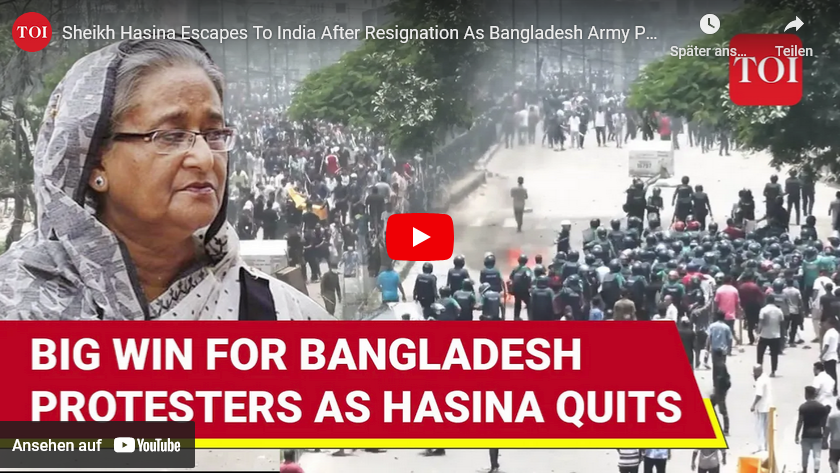What triggered the protests?
The initial spark for the unrest was a High Court decision on a quota system for awarding government jobs. The system, created in 1972, the year after Bangladesh won its independence from Pakistan, allocated 30 per cent of government positions to the descendants of “freedom fighters,” or those who fought on the side of liberation. Prime Minister Hasina is personally tied to the quota system: her father, Sheikh Mujibur Rahman, was the country’s founding leader.
That system remained in place until 2018, when widespread protests prompted the courts to abolish it. But on June 5 of this year, the High Court reversed that decision, clearing the way for the system’s reinstatement. Opposition parties and other critics have argued that such quotas unfairly benefit the descendants of pro-government supporters and are aimed at fostering loyalty within the bureaucracy and perpetuating the power of the ruling Awami League. The discontent is fuelled by a broader perception that there are limited opportunities for merit-based public sector jobs and a belief that some Bangladeshis game the system by obtaining fraudulent freedom fighter credentials.
On July 21, perhaps in part to quell the growing unrest, Bangladesh’s Supreme Court ruled that only five per cent of government jobs should be allocated for freedom fighters’ descendants. The protesters, however, were not placated. On July 22, Students Against Discrimination, the student group behind the protests, announced a 48-hour suspension of their demonstrations (which it subsequently extended another 48 hours) to allow the government to meet a new set of demands. These included a personal apology by Hasina for the protesters’ deaths; the arrest or resignation of law enforcement agents or government or university officials implicated in the crackdown; and compensation for the victims and their families.
On July 30, after Hasina ignored the students’ ultimatum, the students re-started their protests against the „mass killings, arrests, attacks, and disappearances of students and people.”

